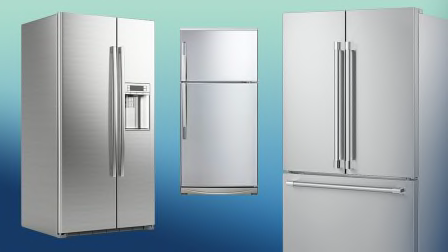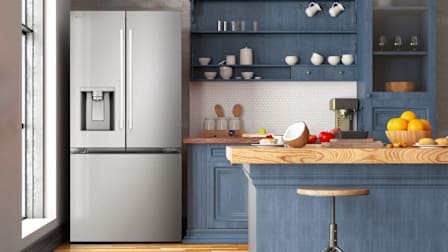What to Look For in an ADA-Compliant Refrigerator for a Disabled User
Adjustable shelves, phone apps, and easy-to-reach freezers are among the features that can make refrigerators more accessible to more people
When you shop through retailer links on our site, we may earn affiliate commissions. 100% of the fees we collect are used to support our nonprofit mission. Learn more.

Shopping for a refrigerator can be confusing, and the choices only become more complicated if you want a model that will work well for someone with a disability. Needs vary by person, but accessibility and universal design experts agree that certain features—from tactile buttons to doors with pull handles—can make refrigerators easier to use for many of us.
Best Refrigerator Configurations for Accessibility
Refrigerators come in four basic configurations: top-freezer, bottom-freezer, side-by-side, and French-door. Each design has advantages and limitations depending on your disability and your food preferences. For example, Rossetti finds side-by-side refrigerators to be ideal for wheelchair users because they provide access to large portions of both the fresh-food and freezer compartments. But if you rarely use frozen foods, that might not be a priority for you.
Top-freezer refrigerators provide the easiest access to fresh-food storage, but make it harder to reach frozen foods. They also have a large door that swings outward and may be difficult to open in a tight kitchen. If you do want a top-freezer refrigerator, an ADA-compliant model could be a good choice. The ADA guidelines require 50 percent of the freezer space to be no more than 54 inches above the ground, which is helpful for people who use a wheelchair.
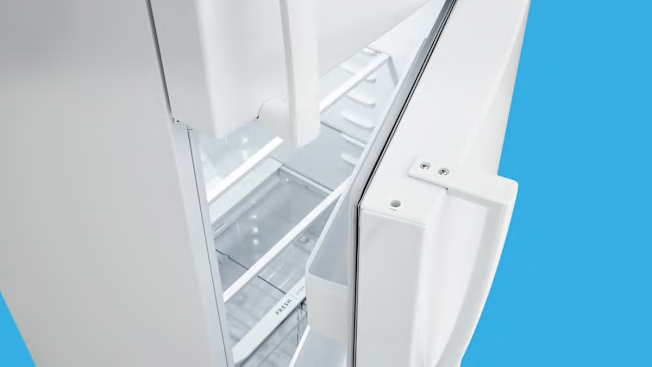
Bottom-freezer refrigerators are the opposite of top-freezers, providing full access to the freezer compartment and icemaker for anyone in a wheelchair. But they provide only partial access to the fresh-food compartment. In addition, the freezer compartment generally must be pulled open, which is difficult for some people.
Sarah Kovac, an accessibility journalist and founder of accessible product review site Five Star Adaptive, likes bottom-freezer refrigerators because they make it easier for her to access the icemaker. She has a condition called arthrogryposis, which limits her ability to use her hands and leads her to use her feet for many daily tasks. “Fridges that have an ice container up high are almost impossible for me to use,” she says.
French-door refrigerators are similar to bottom-freezers, giving a wheelchair user full access to the freezer compartment and partial access to the fresh-food compartment. But they have advantages over bottom-freezer refrigerators. With this configuration, each of the two doors for the fresh-food compartment is lighter than a bottom-freezer’s single fresh-food door. And the doors don’t require as much clearance to open.
In typical French-door refrigeratos with an ice dispenser, the icemaker is located at the top of the left fresh-food door, which can be hard to access. But some of these fridges offer a second icemaker in the freezer compartment that is easier to reach. In French-doors without an ice dispenser, the icemaker is always in the freezer compartment.
Side-by-side refrigerators give you access to most, but not all, of both compartments, and their two doors require less clearance than the doors on a top-freezer or bottom-freezer refrigerator. Side-by-sides also have a freezer door instead of a drawer, making them easier to open for many people.
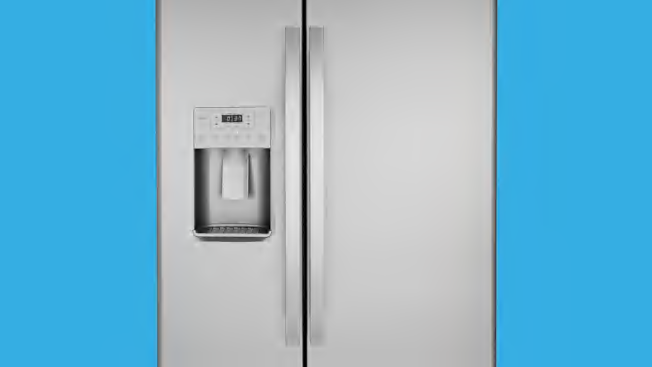
Top Features to Look For in an ADA-Compliant Refrigerator
Once you choose a refrigerator configuration, it’s time to focus on features. Which ones matter most will vary depending on your disability.
“For one person who uses a wheelchair, an ADA fridge might be the best thing for them, and then somebody else might be in a wheelchair and have cerebral palsy and they need totally different things,” Kovac says.
Roll-out shelves make it easier for people who use a wheelchair to access groceries. Rossetti, who uses a wheelchair, says this was “the one feature that made the difference” when choosing her refrigerator.
Transparent shelves and storage bins let you easily see what is inside the refrigerator, which can be helpful for people with vision or mobility impairments. “You’ll also want to make sure the shelves are easy to remove and reconfigure without being too heavy,” says Breann Chai, CR’s refrigerator test engineer.
Bright lighting can help people with low vision or other vision impairments see inside the refrigerator. Make sure the freezer has a light; many refrigerators lack them, according to Chai.
Tactile buttons with clear markings are easier for people with vision impairments to find and operate than capacitive touch buttons or touchscreens, but these buttons are uncommon in today’s refrigerators. In addition, “some controls are located at the top of the inside of the fresh-food compartment and can be difficult to reach” Chai says. But there is some good news. “Controls located lower in the fresh-food compartment or on the refrigerator door are becoming more common and are easier to reach.”
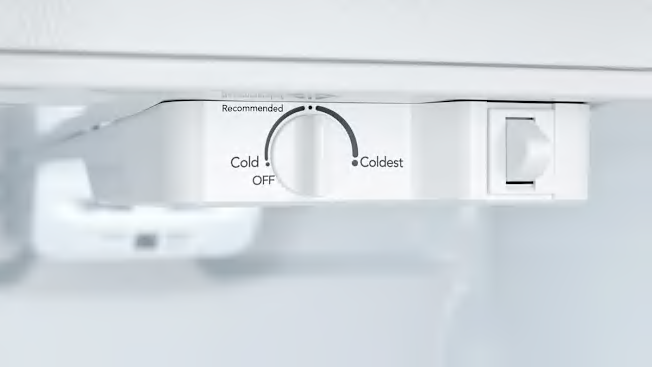
Doors with pull handles are better than those with recessed handles for people with gross motor impairments. A refrigerator can be ADA compliant and still have recessed handles, so keep that in mind as you consider ADA fridges. You also want doors that aren’t too heavy to open and can be opened with one arm. Door-in-door compartments are convenient for accessing items on the door shelves, but their handles can make them difficult to open.
Auto-open doors are a new feature that has popped up in some refrigerators, mainly from Samsung. You can open the doors simply by tapping on them.
Water and ice dispensers are helpful, but check to see that they are easily within reach and offer physical, tactile buttons to change modes. Choosing an ADA-compliant refrigerator for this feature could be helpful, as the guidelines have strict requirements for making “operable parts” easy to use with one hand and little force.
Icemakers can be game-changers, according to Karla Noboa, a CR fundraising research specialist who uses a wheelchair. "With an icemaker, I don’t have to use mental or physical energy to make sure I always have filled ice trays,” she says. “There’s just always ice!” The icemakers in top-freezer and side-by-side refrigerators can be hard or impossible to reach for many people. Those in bottom-freezer refrigerators are much easier to access. (As noted above, some French-door refrigerators have easy-to-reach icemakers in the freezer compartment, but others have their icemakers in less convenient locations.)
Water filters are often located at the top of the fresh-food compartment, which can be hard to reach in French-door, bottom-freezer, and side-by-side refrigerators. “Look for fridges that have their filter located near the lower door shelf or the crisper drawers,” Chai suggests.
Reversible doors on top-freezer and bottom-freezer refrigerators are helpful for many people, regardless of their physical abilities. They can ensure you don’t need to squeeze into a corner to access your groceries.
WiFi connectivity allows you to adjust refrigerator settings from a smartphone app, handy if the physical controls are difficult to use or out of reach. People with vision and gross motor impairments can also take advantage of a smartphone’s screen reader and other accessibility features to operate the fridge’s app.
Top-Performing ADA-Compliant Refrigerators in CR's Ratings
Here are some top-performing refrigerators that either claim to be ADA compliant or offer some of the features listed above.































